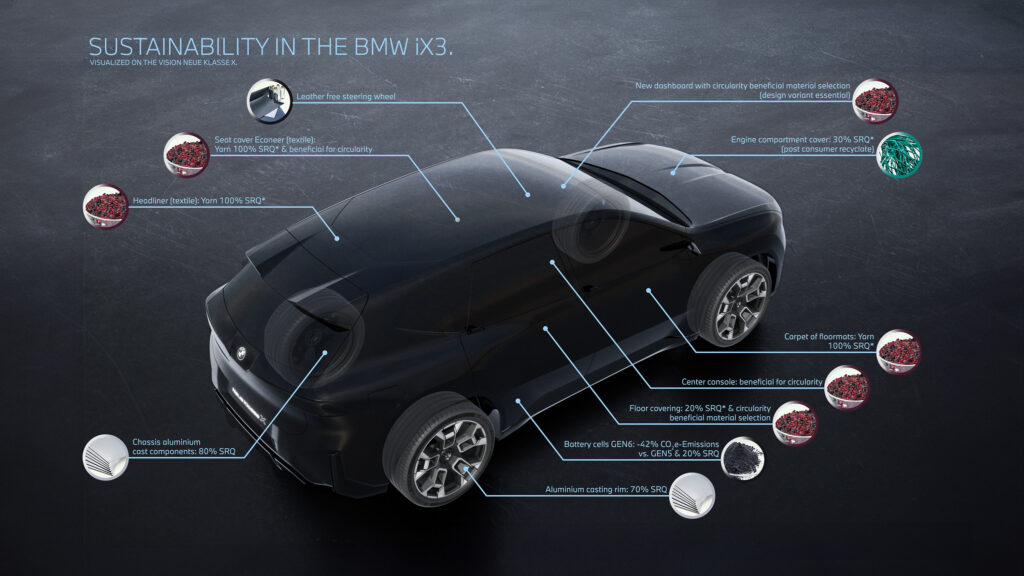BMW iX3: An Ecological Step into the Future
BMW has announced that the new iX3 electric crossover will be manufactured using 33% recycled materials. This will reduce CO₂ emissions in the supply chain by 35%. Among the key components containing secondary raw materials are seat fabrics, wheels, and battery assembly elements.
The manufacturer applied the “design for circularity” principle, maximizing the use of recycled materials. For example, the seat upholstery uses polyester from recycled PET materials. Furthermore, 30% of the raw material for the hood and other components is obtained from marine plastic, such as old fishing nets.
BMW claims that the iX3 compensates for its carbon footprint after just 13,359 miles of driving.
Technologies and Prospects
The car’s high-voltage system uses 50% secondary cobalt, lithium, and nickel, and the production of battery cells is carried out using renewable energy. Aluminum components, such as wheels and suspension, also contain up to 80% recycled material.
Production of the iX3 will begin this year, with the first deliveries expected shortly after the premiere. Final specifications and details will be known after the model’s official presentation in the autumn.
Although BMW places significant emphasis on sustainability, the question remains as to how much these initiatives will affect the final price of the car and its affordability for the mass consumer. Demand for “green” technologies is growing, and the iX3 could become one of the key players in this segment.

